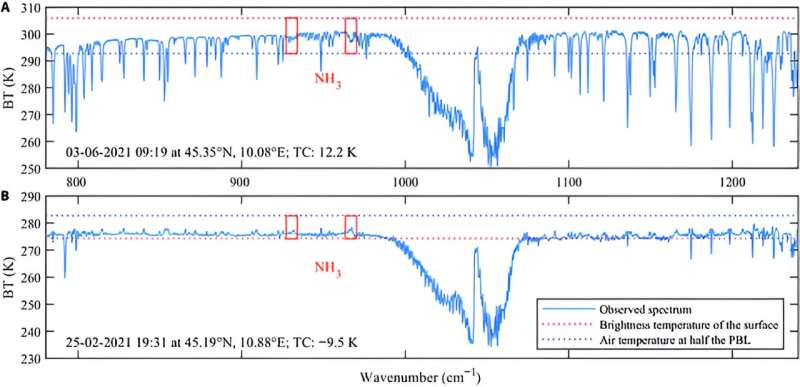This article has been reviewed according to Science X's editorial process and policies. Editors have highlighted the following attributes while ensuring the content's credibility:
fact-checked
trusted source
proofread
Study reveals planetary boundary layer: Satellites illuminate atmospheric mysteries

The endeavor to keep tabs on and curb air pollution has been stymied by the enigmatic nature of the planetary boundary layer (PBL). This atmospheric strip is a hotbed for pollutants. Yet, its mercurial dance through time and across geographies presents a formidable scientific puzzle. Given these hurdles, an in-depth dissection of the thermal contrast (TC) that delineates this layer is imperative.
From the Université Libre de Bruxelles, in tandem with the Royal Belgian Institute for Space Aeronomy, comes a revelatory study featured in the Journal of Remote Sensing. The research harnesses high-spectral resolution infrared data to demystify TC variations, blending inputs from Copernicus Global Land Services with the European Centre for Medium-Range Weather Forecasts' reanalysis.
This research takes the pulse of the global TC under clear skies, revealing its daily ebb and flow, as well as its seasonal metamorphosis. The study uncovers that TC crests between 1130 and 1330 local time, with the daytime acme swelling from a modest 5–10 K in winter to a robust 10–30 K in summer. The seasonal roundelay shows land cover types in a varied waltz of TC, with the bare soils and shrublands pirouetting to a more dramatic tune compared to the more stately forests and wetlands.
Nocturnal TC, typically southbound between -5 and -10 K, find occasional favor in the cool embrace of winter and autumn, courted by temperature inversions. The study flags the pivotal role of TC in fine-tuning satellite sentinels, enhancing their reconnaissance of terrestrial pollutants. These revelations are key to bolstering the sensitivity of infrared sentinels, old and new, for a keener watch over atmospheric contaminants.
Dr. Lieven Clarisse, one of the study's lead authors, remarked, "Our quest has unearthed the intricate choreography of TC, a linchpin for amplifying the acuity of infrared surveillance from the cosmos. This study etches the foundation for a more precise X-ray of atmospheric pollutants as seen from space."
Armed with the optimal timing for measurements, satellite sentinels stand poised to more efficaciously quantify the emissions from localized pollution points. Furthermore, the detailed dataset adds to the understanding of the PBL's part in the climate's backstage machinations, possibly pointing the way to more refined climate models and forecasts.
More information: Tommaso Di Gioacchino et al, Spatial and Temporal Variations of Thermal Contrast in the Planetary Boundary Layer, Journal of Remote Sensing (2024). DOI: 10.34133/remotesensing.0142
Provided by Chinese Academy of Sciences




















